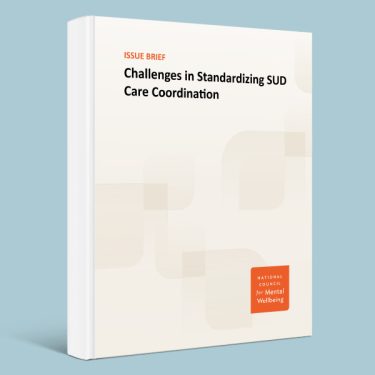Talking Relapse and Multiple Substance Use Disorder Treatment Attempts
Substance use disorder (SUD) is a complicated and varied condition that needs time and innovative approaches for treatment. The path to getting better usually involves going through treatment multiple times, highlighting that the disorder can be long-lasting and recurring.
While the field desperately needs more research on the treatment of individuals returning to addiction treatment for a second, fourth or eighth time, there are a number of indicators of quality care that we can look to as a starting place. We will call these quality indicators for individuals returning to treatment after a reoccurrence of symptoms the Six Rights of Reuse: The right communication, the right to return, the right interventions, the right entry point, the right reflections and right for them.
Right Communication
The words we use to communicate about addiction and recovery have a profound impact on how individuals and larger society perceive and treat individuals with alcohol and other drug challenges.
Stigmatized language acts as a barrier to individuals seeking treatment, so reducing the stigma around relapse is critical. Many have suggested moving away from the medical term, relapse, due to its roots in the temperance movement. In a 2010 article, White and Ali presented internet data that the term “relapse” is being replaced with more morally neutral terms in other medical fields such as cancer. Alternative terms like recurrence, reoccurrence or reuse that are descriptive of normal behavior change may help to alleviate sentiments of individual blame and personal failure.
In addition to language, we need to take a closer look at how we are framing a recurrence of symptoms post-treatment. If we look at the data, relapse is a common part of the recovery process. It takes an individual with a significant substance use problem an average of two serious treatment attempts to achieve recovery. However, for individuals with co-occurring conditions such as depression and anxiety, it takes an average of three treatment episodes to resolve the problem. The journey to recovery is often marked by multiple treatment episodes, each of which provides an opportunity for reassessment and adjustment of the care plan. When we frame recovery as an ongoing process, it starts to develop more accurate expectations for patients and caregivers.
Right to Return
A greater number of recovery attempts is associated with higher psychological distress, including lower quality of life, self-esteem and happiness. Despite this, and alongside efforts to continue to improve treatment, we need to make it easy for individuals to return to treatment after relapse. This means offering low-threshold treatment options, removing barriers to access and destigmatizing their return to treatment. Timing is crucial when it comes to treating SUD, so immediately reconnecting individuals who have relapsed back into treatment and recovery support services, speeds up the time to get them back on their feet and into a place of healing.
Right Interventions
Evidence-based interventions are the cornerstone of effective SUD treatment. However, there is no one-size-fits-all approach. Different combinations of therapies, medications and behavioral interventions may work better for some individuals than others or work better for some individuals at different points in their recovery trajectories. Providers need to be open to exploring new treatment plans and combinations of interventions to increase the likelihood of a successful outcome. Evidence-based treatments for serious and severe cases of SUD include medication-assisted treatment, motivational interviewing, contingency management and relapse prevention.
Right Entry Point
Each new treatment attempt after a period of alcohol or other drug reuse calls for a reassessment of the patient’s severity and level of care. The American Society of Addiction Medicine (ASAM) Levels of Care provide a robust framework for determining the intensity and type of treatment required. Re-assessment after a reoccurrence of symptoms ensures patients are placed at the correct level of care, whether it’s outpatient counseling, intensive outpatient treatment or residential inpatient services.
We also see similar truths in stepped care models that deliver health care services in the most effective yet least resource-intensive treatment first. Stepped care models, similar to the ASAM Levels of Care, maximize system efficiency and capacity while ensuring individuals receive the right level of care at the right time.
Right Reflections
When an individual relapses, it is an indication that the prior course of treatment was not fully effective, whether that is the intervention itself or the combination of individual and environmental factors. Research suggests that in cases of relapse and return to treatment, patients can benefit from reinstatement or adjustment to their routine treatments.
With each subsequent treatment episode, there will be a mix of both old and new environmental factors at play, such as stress, social influences and accessibility to substances. All of these factors will contribute to the individuals capability to and motivation for recovery. With every additional episode of care, it is important to understand and re-evaluate the individuals’ needs including environmental factors, risk factors and their recovery capital. Doing this ensures that we are best serving them in their current state and meeting them where they are now.
Right for Them
Individuals with substance use challenges vary greatly and no single method or combination of treatments are known to be effective for everyone. This lack of a silver bullet or one-size-fits-all approach allows treatment programs the opportunity to customize, personalize and improvise different pathways to recovery for different patients, especially during a multi-treatment episode. Person-centric care is critical to the treatment of individuals who have had a reoccurrence of symptoms and are bringing with them their own experiences and trials with different treatments and interventions.
Person-centric care respects the individual’s unique experiences, needs and goals, and works to tailor treatment to fit them where they are now. This approach also ensures that other aspects of their life like physical health, mental health, social connections and spiritual beliefs are incorporated into their care plan.
The Recovery Journey
Understanding and addressing relapse effectively requires a pragmatic and patient-centric approach, summarized in the Six Rights of Reuse. The SUD field needs more research into effective methods for treating individuals that have returned to treatment after a period of reuse and more funding for low-barrier same-day-access treatment options and long-term recovery supports and monitoring that will help us to better treat addiction.
The recovery journey, although challenging, is a testament to the resilience of those who walk it, and we must do everything we can to support individuals with substance use challenges through multiple episodes of reuse and recovery. By ensuring treatment is timely, at the correct level of care, evidence-based, personalized and inclusive of the right to return, we can enhance treatment outcomes and provide a more robust path toward lasting recovery.
Author
Senior Advisor, Substance Use Disorder in the Strategy and Growth Office
National Council for Mental Wellbeing
See bio




